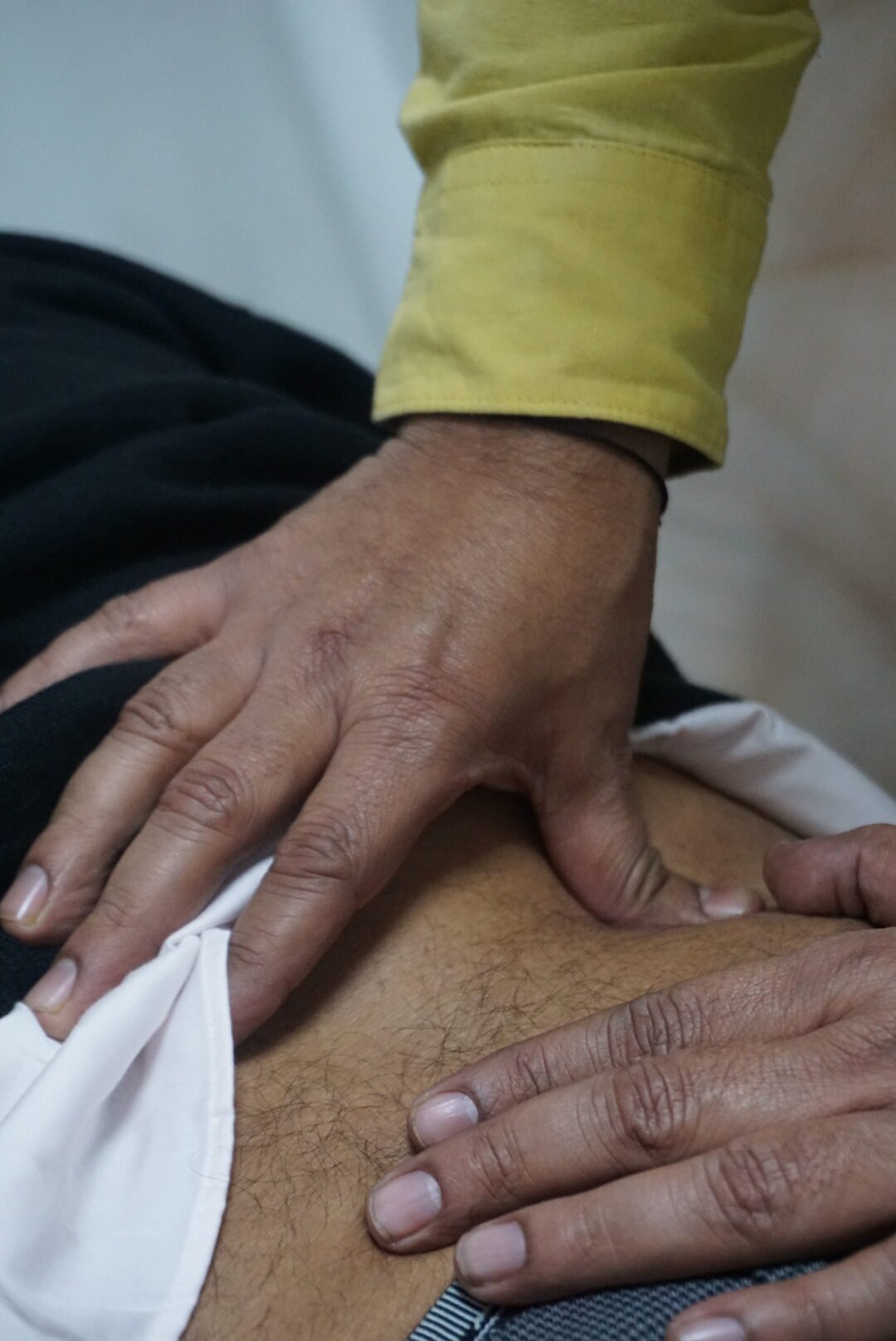What is Manual Therapy?

There are several different types of manual therapy techniques that may be used depending on the patient's needs and the therapist's clinical judgement. Some common manual therapy techniques include: Joint mobilization: This involves gently moving a joint through its range of motion to help reduce pain, improve mobility, and increase joint lubrication. Soft tissue mobilization: This includes techniques such as massage, myofascial release, and trigger point therapy to help reduce muscle tension, improve circulation, and promote healing. Manipulation: This involves applying a high-velocity, low-amplitude thrust to a joint to help improve joint mobility and reduce pain. Stretching: This includes techniques to help lengthen and stretch tight muscles, improve flexibility, and reduce pain. Physiotherapists are healthcare professionals devoted to understanding how and why movement improves function. In addition to manual therapy, our physiotherapists use specifically tailored therapeutic exercise to assist in injury recovery and promote wellness. We also provide information and education to help you understand the nature of your problem and the proposed treatment plan. By combining the principles of evidence-informed practice, evaluative skills, clinical and professional judgement, your physiotherapist will work closely with you, and often with other health care professionals, to ensure that your health goals are met.
WHAT IS ADVANCED MANUAL THERAPY?
Manual Therapy is a hands-on skilled physical treatment approach, primarily used by physical therapists and occupational therapists, to treat musculoskeletal pain and disability by manipulation of soft tissue, joint mobilization, and joint manipulation. Manual Therapy consists of many tools and techniques to get you out of pain and correct what is causing the symptoms.
In our treatment philosophy, it is essential to be hands-on with our patients and for good reason. Patients respond positively to hands-on work when combined with exercise and education. This leads to faster recovery and less out-of-pocket expenses. Manual therapy encompasses a broad group of sophisticated techniques performed by our uniquely trained physical therapists. These may include:
- Orthopedic manual physical therapy techniques (OMPT)
- Joint mobilization
- Joint manipulation
- Active Isolated Stretching (AIS)
- Craniosacral Therapy (CST)
- DiMaggio techniques
- Mulligan Technique
- Muscle energy techniques (MET)
- Myofascial decompression (MFD)
- Myofascial release (MFR)
- McKenzie trained techniques
- Proprioceptive Neuromuscular Facilitation (PNF)
- Stanley Paris Technique
- Strain-counterstrain
- Visceral manipulation
WHAT ARE THE CONDITIONS IN WHICH YOU CAN GET ADVANCED MANUAL THERAPY?
Advanced manual therapy techniques can be used to treat a variety of musculoskeletal conditions and injuries. However, it is important to note that manual therapy should be used as part of a comprehensive treatment plan, and not as a standalone treatment.
Here are some conditions in which advanced manual therapy can be used:
- Neck and back pain: Manual therapy techniques such as mobilization and manipulation can help relieve pain and stiffness in the neck and back.
- Shoulder pain: Manual therapy can be used to improve shoulder range of motion and reduce pain in conditions such as frozen shoulder or rotator cuff injuries.
- Knee and hip pain: Manual therapy techniques can help improve joint mobility and reduce pain in conditions such as osteoarthritis.
- Sports injuries: Manual therapy can be used to treat sports injuries such as sprains, strains, and muscle tears.
- Headaches: Manual therapy techniques can be used to relieve tension headaches and migraines.
- Post-surgical rehabilitation: Manual therapy can be used to improve joint mobility and reduce pain following surgery.
Techniques Include
- Traction
- Massage
- Trigger Point Therapy
- Active Release Techniques: A practitioner determines where adhesions are through touch, the practitioner then couples a patient’s active movement with his/her touch.
- Assisted Active Range of Motion (AAROM)
- Passive Range of Motion
- Lymph Drainage
- Stretches (muscle, neural tissue, joints, fascia)
- Instrument Assisted Soft Tissue Mobilization
- Joint Manipulation: A passive, high velocity, low amplitude thrust applied to a joint complex within its anatomical limit,with the intent to restore optimal motion, function, and/ or to reduce pain.
- Joint Mobilization: A manual therapy technique comprising a continuum of skilled passive movements to the joint complex that are applied at varying speeds and amplitudes, that may include a small-amplitude/ high-velocity therapeutic movement (manipulation) with the intent to restore optimal motion, function, and/ or to reduce pain.
- The terms “Thrust Manipulation” and “Non-Thrust Manipulation” have been used in the literature: “Thrust Manipulation” is used to describe interventions described as Manipulation by IFOMPT
- “Non-Thrust Manipulation” would be synonymous with the term mobilization as proposed by IFOMPT When, and only when movement is painless, applying overpressure at the end of the painless movement
Contraindications for manual therapy:
While manual therapy can be a very effective treatment for many musculoskeletal conditions, there are some contraindications or situations where it may not be appropriate or safe to use.
Here are some examples of contraindications for manual therapy:
- Fractures: If a patient has a recent fracture, manual therapy should not be used until the fracture has fully healed.
- Joint dislocation: If a joint is dislocated, manual therapy should not be used until the joint has been properly relocated by a qualified healthcare professional.
- Inflammatory conditions: If a patient has an active inflammatory condition such as rheumatoid arthritis, manual therapy may exacerbate inflammation and make the condition worse.
- Severe osteoporosis: If a patient has severe osteoporosis, manual therapy may increase the risk of fracture.
- Cancer: In some cases, manual therapy may not be appropriate for patients with certain types of cancer or undergoing cancer treatment.
- Pregnancy: Some manual therapy techniques may be contraindicated during pregnancy due to the risk of harm to the fetus.
To learn more about advanced manual therapy services, contact us today and schedule your appointment at KURE CLINIC.
